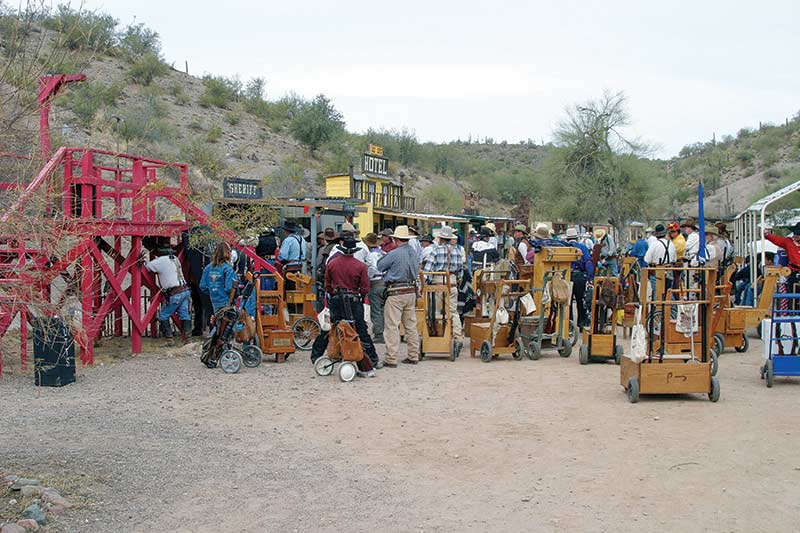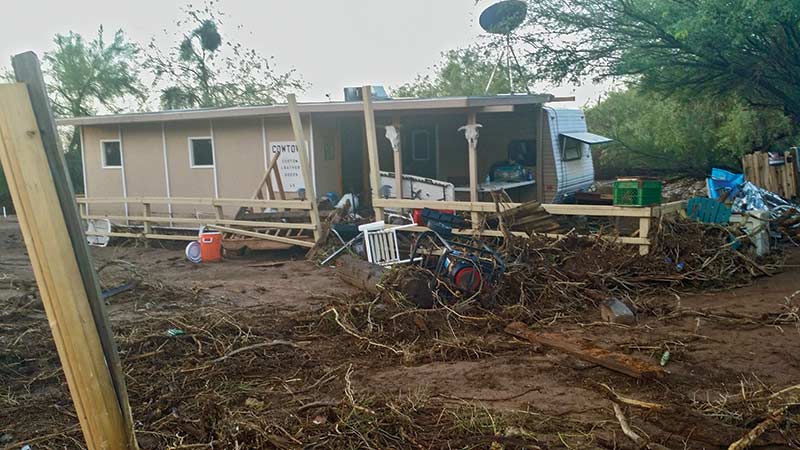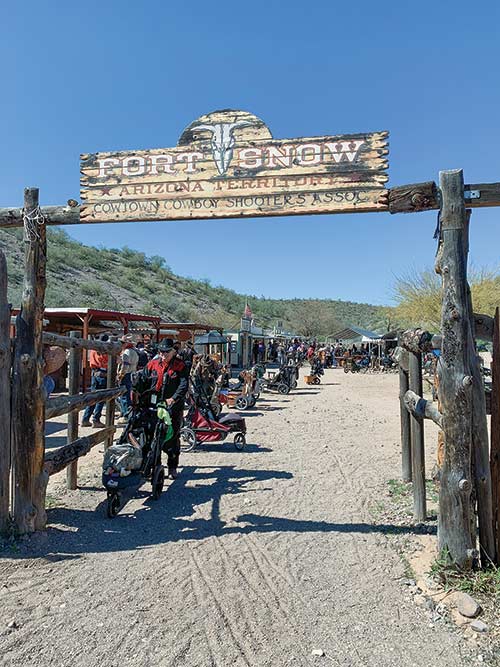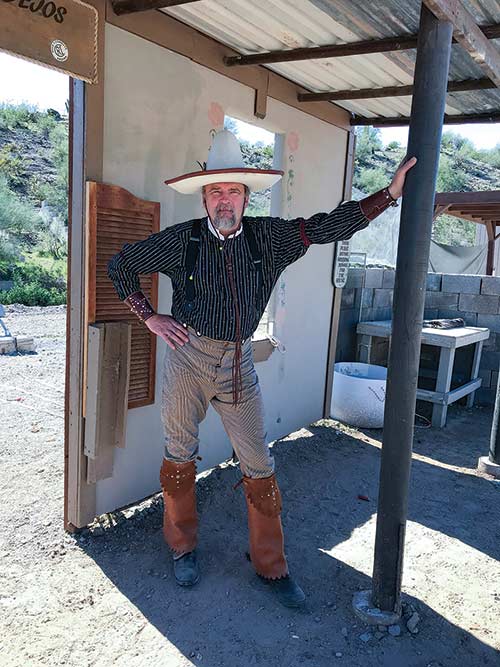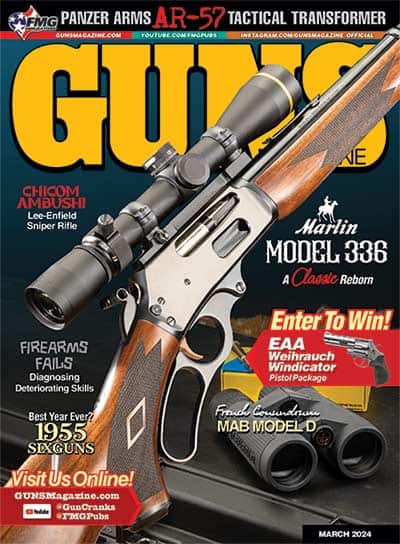Cowtown, Arizona
The Cradle Of Cowboy Action Shooting
Cowtown! The name itself makes a person want to don a pair of spurs and a 10-gallon hat! Just about everyone involved in Cowboy Action Shooting has heard of Cowtown. In fact, it is one of the cradles of the sport and continues to generate countless champions. So, how did Cowtown start? Well, pull up a chair to the mesquite-wood fire and listen …
History
In the 1970s, Hollywood stuntman Ron Nix started building an 1880s movie set north of Peoria, Ariz. Cowtown was born as the saguaro-studded hills and canyons made the perfect location for filming. The town was also a school to teach the craft of being stuntmen (or women). Historians say over 200 movies and television episodes were shot at Cowtown, including the classic Billy Jack films, the little-known film Knight Rider 2010 and Dead Man, an “acid” western starring Johnny Depp. There were even rodeo and rappelling events.
The location was the perfect backdrop for Civil War reenactments and provided an Old West experience for tourists, complete with staged shootouts and gun-
handling demonstrations. Nationally known fast-draw artists Bill Waller and Jim Martin frequently put on fast-draw shows in front of Cowtown audiences.
Waller, Martin and a group of friends were also enjoying frequent informal competition shooting “cowboy” guns in staged scenarios in the open desert not far from the small town of Cave Creek. As the group grew, they realized they needed to organize and become a proper club. In 1982, the Arizona Cowboy Shooters Association was born.
With the growing local excitement of cowboy-action shooting, it wasn’t long before Cowtown owner Ron Nix became aware of the Arizona Cowboy Shooters Association. It seemed like a perfect match to invite the group to compete at Cowtown.
An area was cleared in a canyon below the movie set for a shooting range. It was simple at first but kept growing. False-fronted buildings were erected and Nix donated other items to complete the ambiance. When the match was over, the shooters could celebrate their successes or drown their sorrows in the active saloon and restaurant in the movie set.
Along the way, there were a few growing pains and a new name was chosen — the Cowtown Cowboy Shooters Association.
Joining Forces
Lady Luck also played a hand in Cowtown. A group of shooters from California was looking to organize a cowboy-action shooters club in which people around the country and even the world could participate.
The two groups compared notes and decided to work together for mutual benefit. The Single Action Shooting Society (SASS) was born. The first sanctioned SASS match was held at Cowtown in September 1987. In a trend that continues today, many Cowtown shooters — including the top female shooter Gail Snow, aka Barbwire — dominated the top positions.
Gail and her husband, Don, became caretakers of the range. They made sure it was done if something needed doing, from setting up targets to writing stages. Through their hard work, Cowtown Shooters continued to grow.
The sport of cowboy action shooting kept growing and Cowtown became the location for the Arizona State Championships. Other big matches blossomed in the Sonoran Desert but things weren’t always coming up poppies and saguaro blossoms for Cowtown.
Tragedy and Triumph
In the late 1990s, a fire swept through some of the buildings. The City of Peoria had recently incorporated the area and condemned the remaining movie set buildings as they had not been built to code. Gone were the shops, the restaurant, the saloon and wide-eyed tourists. From the remains, a wooden cowboy — forever caught in agony — was pulled down to the range to remember what had once been.
In 2000, tragedy struck the Cowtown Shooter family. Don Snow passed away after a prolonged illness and the range had lost a guiding light. In memorial the cowboy range was rededicated as Fort Snow.
In 2014 torrential rains sent a flash flood raging down the canyons of central Arizona. The deluge engulfed the Cowtown range and decimated the mock buildings comprising the stages. Ironically, a church brought down from Nevada was the only building still standing.
Once the shock of the devastation wore off, SASS clubs from around the state and beyond pitched in to clear the rubble. Alums from around the world sent their support. Buildings used in the SASS Winter Range match were donated to Cowtown. Gail and the Swiss Kid worked to design new stages and a better flow pattern for the big games. Pulling together, Cowtown Alumni rebuilt the setting into what is seen today.
The cowboy-action range wasn’t the only thing changing. Under new ownership, Cowtown branched out. Now, hardly a day or night goes by when there isn’t some competition or training. From long-range matches to USPSA events, from steel matches to multi-gun matches, they even host John Wick-inspired Excommunicado events.
The gates of Fort Snow have seen shooters come and shooters go, but the camaraderie — and passion — for fun and excellence remain the same. While Cowtown has expanded to become one of the premier multipurpose ranges in the Southwest, it will always be remembered as the cradle of cowboy action shooting.
